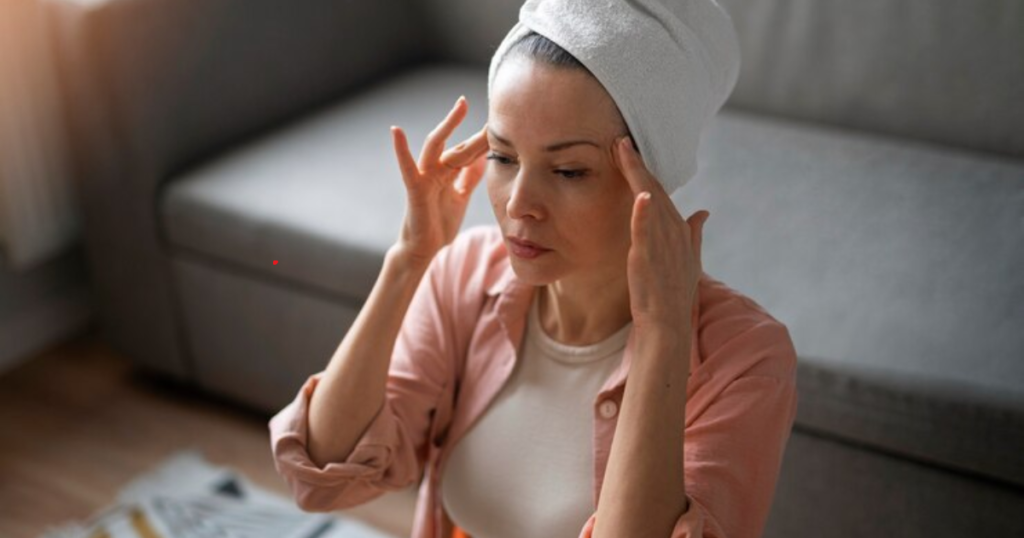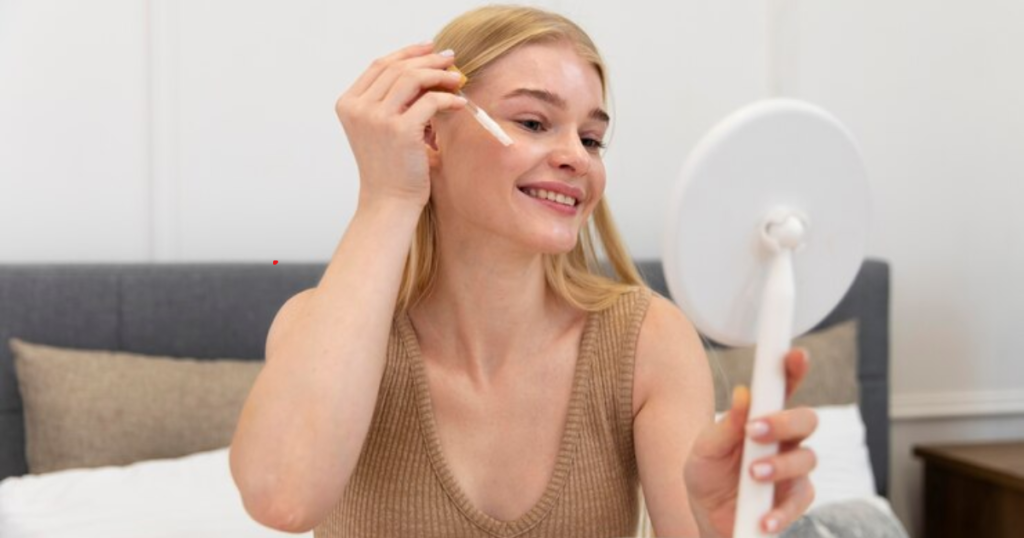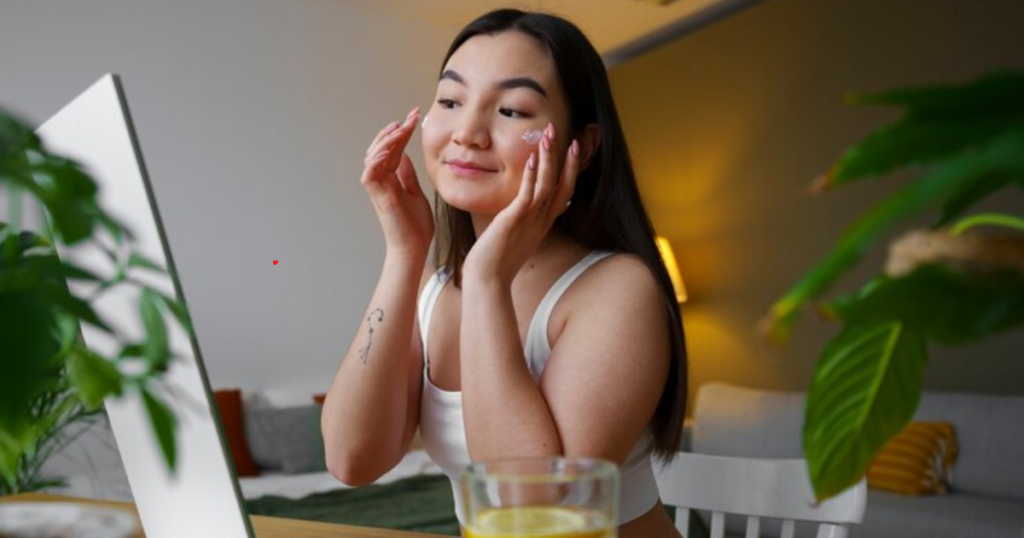Taking care of your skin is really important, and using the right products can help a lot. One product that people talk about a lot because it works well is Tretinoin. But how long should you leave tretinoin on your face? Let’s find out more about it.
What is Tretinoin and How Does it Work?
Tretinoin is a medicine that is commonly used to treat acne and skin aging. It’s a vitamin A derivative that promotes skin cell turnover while also avoiding hair follicle clogging, which can lead to acne. It also increases collagen formation, which can enhance the look of fine lines, wrinkles, and skin texture.
Tretinoin comes in a variety of forms, including creams, gels, and lotions, and is commonly applied topically to the afflicted areas of the skin. It is critical to utilize tretinoin as prescribed by a healthcare practitioner, as it might cause skin irritation and sensitivity to sunlight.

How to Use Tretinoin?
When using tretinoin, you should follow these guidelines:
Cleanse your skin: Cleanse your face with a gentle cleanser and pat it dry before applying tretinoin. This helps to remove any filth, oil, or cosmetics that can interfere with the medication’s absorption.
Wait for your skin to dry: After washing your face, wait 20 to 30 minutes before applying tretinoin. This allows your skin to completely dry, lowering the chance of inflammation.
Apply a pea-sized amount: Gently apply tretinoin over the afflicted regions of your skin. Unless instructed by your healthcare provider, do not use it to areas without acne or wrinkles.
Avoid sensitive regions: Do not apply tretinoin too close to your eyes, mouth, or other sensitive areas of your skin.
Apply sunscreen: Tretinoin can make your skin more sensitive to sunlight, so apply a broad-spectrum sunscreen with an SPF of 30 or higher during the day. Apply sunscreen every morning, even if you don’t plan to spend much time outside.
Start slowly: If you’re new to tretinoin or have sensitive skin, start by using it every other or third night to give your skin time to adjust. Gradually increase frequency as tolerated.
Moisturize: Because retinol can be drying to the skin, it’s critical to moisturize on a frequent basis, especially if you’re experiencing dryness or irritation.
Be patient: It may take many weeks for your skin to improve after using tretinoin. Stick with it and be patient, even if you don’t notice immediate results.
When Should You Apply Tretinoin?
Tretinoin is commonly applied at night before going to bed. This is because tretinoin can make the skin more sensitive to sunshine, therefore applying it before bed lowers the chance of sun exposure.
Furthermore, tretinoin works best when it can permeate the skin without being hampered by other skincare or makeup products that are typically used during the day. By using tretinoin at night, you allow it to work on your skin while you sleep, increasing skin cell turnover and collagen formation.
It is critical to follow your healthcare provider’s or pharmacist’s exact directions for tretinoin application time and frequency, which are based on your individual needs and skin condition.

Benefits of Using Tretinoin
Tretinoin, a derivative of vitamin A, provides various skin benefits:
- Acne Treatment: Tretinoin is extremely successful at treating acne by unclogging pores, reducing inflammation, and preventing new breakouts.
- Improves Skin Texture: Using tretinoin on a regular basis can smooth out rough skin texture and reduce the appearance of fine lines, wrinkles, and rough patches.
- Enhances Collagen Production: Tretinoin increases collagen formation, resulting in firmer, more elastic skin. This can help to reduce age-related indications including wrinkles and drooping skin.
- Fades Hyperpigmentation: Tretinoin can reduce dark spots, freckles, and other types of hyperpigmentation by increasing skin cell turnover and exfoliation.
- Reduces Photodamage: It can help to repair some of the damage caused by sun exposure, such as sunspots and photodamaged skin, by stimulating the creation of new, healthier skin cells.
- Prevents and Treats Stretch Marks: Prevent and treat Tretinoin may help prevent and decrease the appearance of stretch marks by increasing collagen synthesis and skin suppleness.
- Evens Skin Tone: By encouraging the shedding of dead skin cells and the creation of new ones, tretinoin can help to even out skin tone and give the skin a more radiant appearance.
Tretinoin can also improve the efficiency of other skincare products, such as moisturizers and serums, by increasing their absorption into the skin.
How Long to Leave Tretinoin on Your Face?
The length of time you should leave tretinoin on your face is determined on the sensitivity of your skin and how it reacts to the medication. Below are some general guidelines:
- Initial Application (for New Users):
- When first starting tretinoin, it is frequently recommended that you keep it on for a short period of time to evaluate how your skin reacts.
- You might begin by applying tretinoin and keeping it on for 20-30 minutes before rinsing it off. Gradually extend the duration as your skin adjusts.
- Building Tolerance:
- Over the course of a few weeks, you can extend the time you leave tretinoin on your skin.
- The most usual technique is to leave it on overnight.
- General Application:
- Once your skin has adjusted, tretinoin is often applied to the face nightly.
- Apply tretinoin at night before going to bed and then wash it off in the morning.
- Skin Sensitivity Considerations:
- If you suffer irritation, redness, or extreme dryness, try lowering the length or frequency of application.
- Moisturizing your skin and using a gentle cleanser can help to reduce unwanted effects.

How Long Does it Take for Tretinoin to Work?
Tretinoin usually takes several weeks to have apparent results. In most situations, you should see results within 6 to 12 weeks of constant use. However, full results may take up to 6 months or longer, depending on the individual’s skin type, the condition being treated, and the strength of the tretinoin formulation.
It is critical to follow your dermatologist’s instructions and be patient throughout the process, as constant use over time gives the best results. Because tretinoin might cause increased sun sensitivity, it is critical to use sunscreen on a daily basis.
Does Tretinoin Cause Side Effects?
Yes, tretinoin can have adverse effects, particularly when you initially begin using it. Typical side effects include:
- Skin irritation: Skin irritations might include redness, dryness, itching, and peeling. These symptoms usually subside as your skin reacts to the drug, but it is critical to begin with a lower concentration and gradually increase if necessary.
- Increased sensitivity to sunlight: Tretinoin might increase your skin’s sensitivity to sunlight, increasing the risk of sunburn. It is critical to apply sunscreen everyday and avoid prolonged sun exposure.
- Acne flare-ups: When people initially start taking tretinoin, they may notice a transient exacerbation of their acne. This is commonly known as the “purging” phase, and it normally passes within a few weeks as the drug begins to act.
- Dryness and peeling: Tretinoin can cause dryness and peeling, particularly in the early weeks of treatment. Using a mild moisturizer can help to relieve these sensations.
- Skin discoloration: In some circumstances, tretinoin can induce transient hyperpigmentation or hypopigmentation. This is more common among those with darker skin tones.
- Eye irritation: Avoid using tretinoin near your eyes, as it can cause irritation and inflammation.
Related: Why Did My Pores Get Bigger All of a Sudden
Conclusion
Tretinoin is like a super strong ingredient in skincare stuff that can really change how your skin looks if you use it right. You gotta figure out how long to leave tretinoin on your face and change it up depending on what kind of skin you have, so it works the best without causing any problems. It’s super important to talk to a skin doctor to make sure you’re using it the right way for your skin.
People Also Ask
FAQ 1: What is Tretinoin, and why do I need to put it on my face?
Tretinoin is a lotion or gel that improves your skin’s appearance. It can remove pimples and smooth your skin. You apply it to your face at night before going to bed so it can operate while you sleep.
FAQ 2: How long should I leave Tretinoin on my face?
You should keep Tretinoin on your face all night. After using it, don’t wash your face till the morning. This provides Tretinoin adequate time to help your skin heal.
FAQ 3: Can I wash Tretinoin off after a few hours?
No, you need not wash off Tretinoin after a few hours. It need the entire night to function effectively. If you wash it off too soon, it may not benefit your skin as much as it could.
FAQ 4: What if my skin feels itchy or red after using Tretinoin?
When you first start using Tretinoin, your skin may feel itchy or red. This is typical. Your skin is adjusting to the medicine. If you are extremely uncomfortable, speak with an adult or a doctor. They can tell you to use it less frequently or to apply moisturizer.
FAQ 5: Can I use Tretinoin every night?
It depends on how your skin feels. Some people take Tretinoin every night, while others only every other night. Begin by using it a couple times per week and monitoring how your skin reacts. If everything is fine, you can use it more frequently. Always do what your doctor tells you.









Leave a Reply